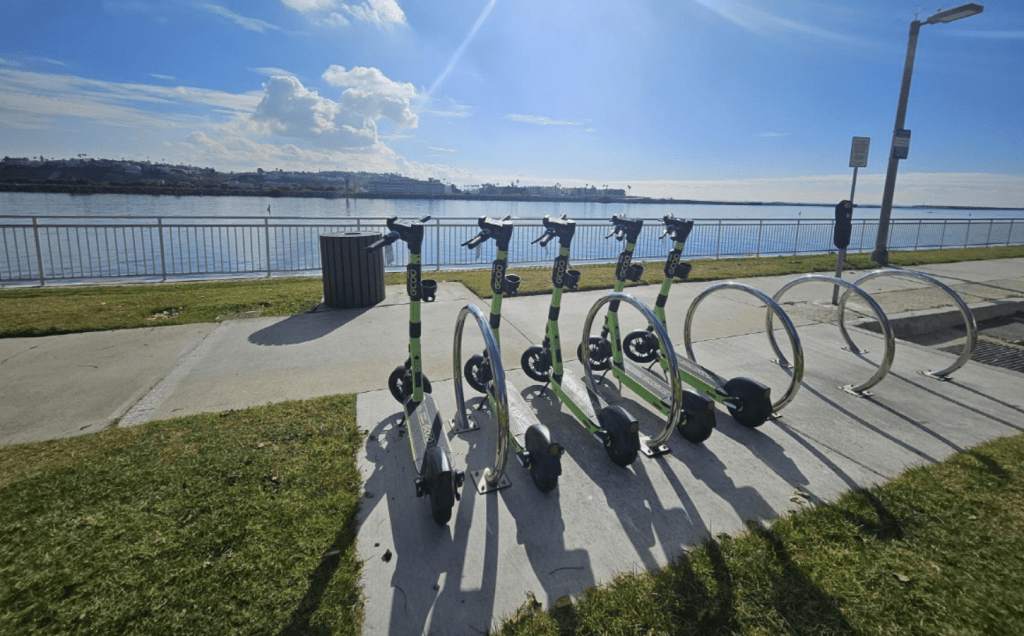
While micromobility companies around the globe have been in limbo and hitting snags like bankruptcy, shutdown and layoffs, a Seoul-based shared e-scooters and e-bikes operator called Gbike is gearing up to go public on the Korean stock market and is reviewing acquisition targets.
In an exclusive interview with TechCrunch, Walter Yoon, CEO and founder of Gbike, said the startup is currently in talks for acquisitions in the micromobility industry to increase its market share before its planned initial public offering, aiming for early 2025. “Details have not been materialized yet, but we’re currently looking at around three to five targets to acquire,” Yoon said, adding that it has not decided how many acquisitions it will complete.
Gbike acquired a local micromobility platform called ZET from Hyundai Motor for an undisclosed amount last year to bolster its technological synergies.
The startup recently closed its Series C, around $9.1 million, equivalent to 11.9 billion KRW, in the form of a convertible note, which brings its total raised to $21 million since its inception in 2017.
The seven-year-old startup boasted its profitability in stark contrast to its global peers. Gbike posted an EBITDA of $13.7 million and revenue of $40 million in 2022, Yoon said. The startup expects to generate around $50 million in revenue, a 25% increase year on year, in 2023, with 30% of EBITDA and 10% of EBIT in 2023.
“We improved the profitability through deep vertical integration from logistics and operations to manufacturing,” Yoon told TechCrunch. “Based on this fully integrated capability, we set out our vision to innovate the micromobility ecosystem through battery-[swapping] infrastructure. And this vision resonated with investors.”
The company initiated its battery-swapping station project two years ago. Last month, the company partnered with Zentrophy, a Korean battery-swapping infrastructure operator, to build its first battery-swapping station in South Korea this year. It has the ambition to build 4,000 stations across the country by 2030. After becoming financially sustainable with the swappable battery infrastructure, the company will allow other privately owned personal mobility manufacturers to adopt Gbike’s battery system for their vehicles.
One of the things that set Gbike apart from its competitors is its capability to build its own vehicles — e-scooters, e-bikes and batteries, Yoon mentioned. On top of that, unlike peers that outsource the field operators, who pick up vehicles and deliver batteries, Gbike’s full-time, integrated operation team is its other differentiator, which helps the startup streamline the communication channel from field operators to IT developers for better performance, Yoon explained.
Gbike launched its own-developed e-bikes in May last year and now operates a fleet of 35,000 e-bikes. It has a fleet of 100,000 electric scooters and 3.4 million users in South Korea. Last year, it also unveiled its own battery to fit not just e-bikes, but also e-wheelchairs, e-strollers, e-scooters and e-mopeds. Gbike, which has 160,000 rechargeable batteries, says around 50,000 batteries are being used daily.
The startup continues investments in international markets. It launched the electric mobility service in Bangkok and Phuket, Thailand, in March and October, respectively. In the first quarter of this year, Gbike intends to launch its service in Vietnam. Though the startup’s primary focus markets are South Korea and Southeast Asia, it is testing the U.S. market. It launched in Memphis, Tennessee, in July and LA and Guam in December. When asked how it could get through the turbulent micromobility market in the U.S., Yoon said it is testing and learning the new market that is totally different from the markets in which it has been operating.
The company operates a fleet of 2,000 e-scooters in Thailand and another fleet of 2,000 e-scooters in the U.S. Yoon said this year’s goal for Gbike is turning into profit-making in Southeast Asia and the U.S.
Gbike has 310 staff as of December, up 34.7% from 230 in February last year.
This article has been updated to correct revenue and EBITDA.




